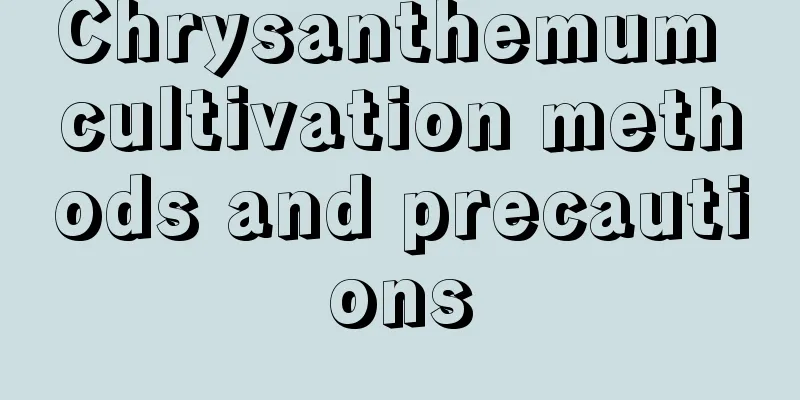Chrysanthemum cultivation methods and precautions

1. SoilTo grow chrysanthemums, you need soil with high nutrient content and strong drainage ability. Generally, you can mix leaf mold, sandy soil and fertilizer cake residue in a ratio of 6:3:1. After preparation, you can add a little vinegar to lower the pH value of the soil, making it more conducive to the growth of chrysanthemums. 2. WaterWhen watering chrysanthemums, water them when the soil is dry and then wet, not half dry and half wet. In addition, it is important to drain the accumulated water in the soil in time during the rainy season, otherwise it will easily cause root rot. 3. LightingAs a typical short-day plant, chrysanthemum does not need too much light to bloom. On the contrary, if the light time is too long, it will only grow leaves but not bloom. Except for the flowering period, the time for sun exposure can be slightly longer at other times. 4. TemperatureChrysanthemum likes coolness and is slightly cold-resistant. The suitable temperature for its growth is 18-21℃. The highest temperature in summer cannot exceed 32℃, and the lowest temperature in winter cannot be lower than 10℃. The temperature should not be lower than 17℃ when it just starts to bloom, and it can drop to 15-13℃ in the middle and late stages of the flowering period. 5. Notes1. Change the pot every year. After one year of growth, the nutrients in the soil in the chrysanthemum pot are basically consumed. At this time, you should replace it with new potting soil with sufficient nutrients. Repotting is usually done in spring. 2. Prune in time. During the chrysanthemum seedling stage, the side buds need to be cut off to reduce nutrient consumption. When the buds first begin to form, you should choose to cut off the unnecessary buds to increase the amount of nutrients available to the remaining buds, making the flowers that bloom larger and brighter. |
<<: Hyacinth cultivation methods and precautions
>>: Mint cultivation methods and precautions
Recommend
How to prune Jade Flower
When is the best time to prune Jade Flower? There...
How can I grow Anthurium well? Can I put it in the bedroom?
1. How to raise it to grow well 1. Sunlight: Unde...
How many snake plants should be planted in one pot? Should I use a deep pot or a shallow pot?
1. How many seeds should be planted in one pot? W...
The language and legend of gorse
The Flower Language of Broom Humble, humble, eleg...
These 10 kinds of trees are considered to be the most unique in the world. Not only do they look strange, some of them can also "save lives"!
10. Sausage Tree The sausage tree sounds a bit cu...
Cultivation methods and precautions of Peach Succulent
The peach succulent is very easy to grow. Its lea...
How to grow star horn quickly
Planting materials: Planting material is the basi...
Can Epiphyllum be watered with vinegar?
Can Epiphyllum be watered with vinegar? Epiphyllu...
The difference between rotor lotus and clematis
1. Differences in roots Both belong to the Ranunc...
Can lucky bamboo be watered with beer water?
Can lucky bamboo be watered with beer water? Luck...
How to propagate Prunus mume
Propagation of Prunus mume by division Because Pr...
What kind of potted trees are suitable for indoor
1. What kind of trees are suitable for indoor pla...
The secret method of using leaves to root Clivia
1. Select the leaves One thing to note when choos...
How often should I water the aloe vera? How often should I water the aloe vera?
How often should I water my aloe vera? It is gene...
Common diseases and pests of Podocarpus and their control methods
Leaf spot Symptoms: There are oval and long light...









